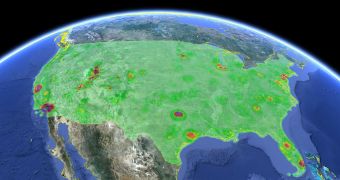Google has spent the last few years amassing data on the so-called white space spectrum usage in the US. After TV broadcasting went digital, a huge swatch of prime radio spectrum became free.
Google fought to keep that portion of the spectrum open to any application and has since worked on mapping how the white space is already in use.
Google is now ready to test its database in the wild and will be holding a 45-day trial along with the US Federal Communications Commission.
"Our database is beginning a public trial with the FCC. Our trial site allows industry stakeholders (broadcasters, cable, wireless microphone users, licensed spectrum holders) to test and provide feedback on the database," Google announced.
"The trial site also allows anyone to find out how much TV white spaces spectrum is available at any location, such as your home or office," it added.
These pockets of unused spectrum vary from place to place, which is why these databases are needed.
Anyone wanting to make use of that portion of the spectrum will have to check whether someone else isn't using it already in that region and that's hard to do without a centralized authority, the databases Google and others are building.
The hope, for Google and most of the other companies involved, is that the unused space will eventually be exploited for long range, high-speed wireless internet.
Building a network in this portion of the spectrum should be cheaper and the signal would travel a lot further than that of most current mobile phone networks.
This presents a big opportunity for cheap internet access in underserved areas in both the emerging countries and in the developed ones.
But before any of this can take place, the infrastructure which would allow ISPs or even individuals to make use of the available spectrum efficiently must be put in place.

 14 DAY TRIAL //
14 DAY TRIAL //